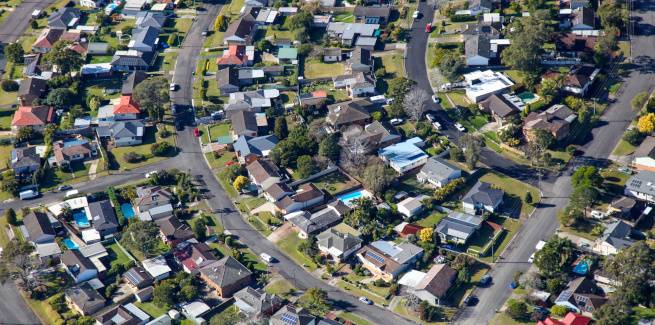According to research firm Propertyology’s analysis of price trends in 180 Australian towns and cities, median house prices trebled in value in over 61 per cent (111) of the locations in the two decades ending December 2018.
“Whether someone purchased real estate in any of our eight capital cities 20 years ago or in a majority of Australia’s non-capital locations, today it’s worth at least three times what you paid for it,” Propertyology’s head of research, Simon Pressley, said.
“I don’t know about anyone else, but an average annual capital growth rate of circa 6 per cent across 20 years sounds damn good to me, especially at a time when Australia’s two largest cities have dropped 10 per cent in value in the past 12 months.”
Mr Pressley noted that despite the perception of regional markets as “high risk” among investors, such locations experienced similar rates of house price growth over the 20-year period as capital cities.
“There are risks and opportunities within every location. For capital cities and non-capitals, the years when a location’s property market performs best are when local economic conditions and buyer confidence are strong, and vice versa,” Mr Pressley added.
“Generally speaking, locations with a more affordable median house price have more upside potential for capital growth. For that potential to be realised, the real skill is being able to identify the locations with positive leading economic indicators.”
Propertyology’s research comes amid expectations of a rebound in the housing market, following almost two years of national home price declines.
CoreLogic’s latest Hedonic Home Value Index reported that in May, national dwelling values fell 0.4 per cent, which represented the slowest rate of decline since May 2018.
According to CoreLogic’s head of research, Tim Lawless, the improvement was primarily driven by lower rates of decline across Sydney (0.5 per cent) and Melbourne (0.3 per cent), which spurred the initial downturn in the housing market.
Mr Lawless said he expects the federal election outcome, which signalled the rejection of the Labor opposition’s proposed changes to negative gearing and the capital gains tax, to help build on the improvement in sentiment across the housing market.
CoreLogic’s research analyst also pointed to APRA’s proposed changes to mortgage serviceability guidelines, noting that the removal of the 7 per cent interest rate buffer would improve access to credit, and in turn, demand for housing.
Many pundits, including Mr Lawless, also expect the Reserve Bank of Australia’s decision to drop the official cash rate to a new record low of 1.25 per cent to also play a role in stimulating the housing market, with several lenders already passing on the cut to new and existing mortgage customers.
Such trends have prompted AMP chief economist Shane Oliver to forecast a sooner-than-expected return to equilibrium in the housing market.
“Our forecasts for national average prices have been for a price fall of 15 per cent top to bottom (of which we have done 10 per cent so far), and for Sydney and Melbourne, it’s been for a price fall of 25 per cent top to bottom (of which Sydney has already done 15 per cent and Melbourne 11 per cent) and for prices to bottom in 2020,” Mr Oliver noted.
“Reflecting [developments in the market], we are revising the estimate for Sydney home prices to a 19 per cent top-to-bottom fall, Melbourne to 15 per cent top to bottom (partly because it has been holding up much better, likely reflecting stronger population growth) and the national average to 12 per cent top to bottom, with prices likely to bottom by year end.”
[Related: Owner-occupiers fuelling lending bounce]
